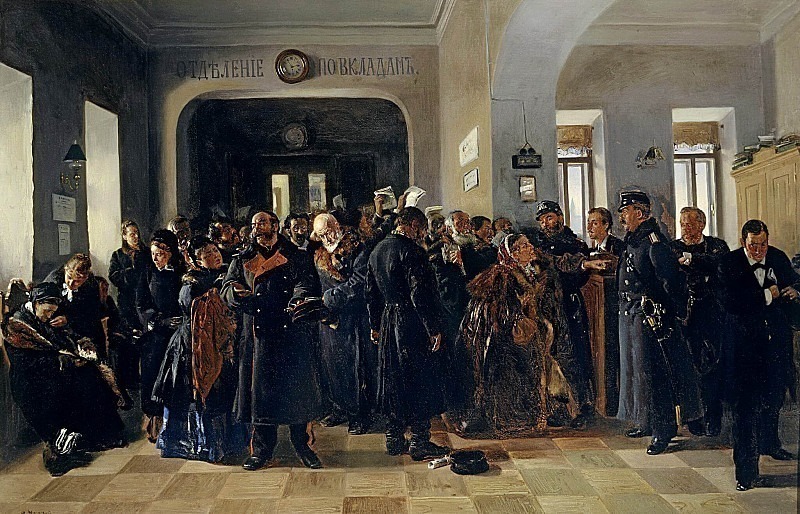Bank default Vladimir Makovsky (1846-1920)
Vladimir Makovsky – Bank default
Edit attribution
Download full size: 2048×1315 px (0,4 Mb)
Painter: Vladimir Makovsky
Location: The State Tretyakov Gallery, Moscow (Государственная Третьяковская галерея).
Makovsky painted paintings on a variety of subjects. They could be full of humor, irony, or contempt. He is known as the creator of countless paintings that truthfully depict all the various levels of Russian society of his time. Merchants, officials, nobles, artisans, peasants, beggars, vagrants - all could become heroes of his paintings. The eighties was the heyday of the artist. He wrote many excellent works, among them the work "The collapse of the bank," written in 1881.
Description of Vladimir Makovsky’s painting The Collapse of the Bank
Makovsky painted paintings on a variety of subjects. They could be full of humor, irony, or contempt. He is known as the creator of countless paintings that truthfully depict all the various levels of Russian society of his time. Merchants, officials, nobles, artisans, peasants, beggars, vagrants - all could become heroes of his paintings.
The eighties was the heyday of the artist. He wrote many excellent works, among them the work "The collapse of the bank," written in 1881. It tells the tragic ruin of the Loan Bank in Moscow. Makovsky showed the episode when investors ran to the bank, hoping to save at least some of their money. They cannot yet believe the likelihood of such a daring robbery. A cold light dominates the room.
One can feel the turmoil of the moment in the picture. Each person is unique. In the posture and gestures of the man, one can surmise the character the artist intended. He masterfully conveys a variety of reactions to the same event: despair, grief, anger. Some stand with a dejected face, others are trying to figure out what to do or are loudly indignant at what has happened. On the left is a picture of a grandmother who has been sickened by the news. After all, her last money may have gone missing.
The painter attaches great importance to the coloring of the paintings. On the canvas dominate the cold colors: gray, black and blue. Colors are soft and not notable for brightness. With the help of this, expressive faces, poses, gestures are shown. Thus showing the stereotypical behavior of bourgeois society.
The originality of the subject attracts the viewer. Looking at the picture, you feel a sense of compassion. After all, the picture tells about the difficult fate of ordinary people. Most likely, the plot was conceived not only to show the past, but also to reflect on the future, as the event is relevant in the present.
Кому понравилось
Пожалуйста, подождите
На эту операцию может потребоваться несколько секунд.
Информация появится в новом окне,
если открытие новых окон не запрещено в настройках вашего браузера.
You need to login
Для работы с коллекциями – пожалуйста, войдите в аккаунт (open in new window).

















You cannot comment Why?